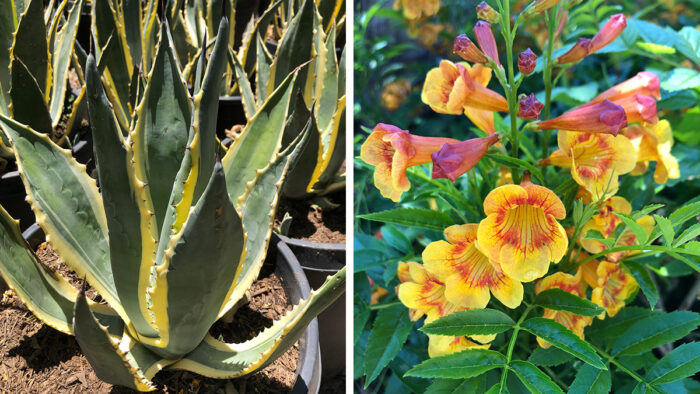
Although I have no problem creating single-plant containers or placing plants individually in garden beds, sometimes I come across a grouping of plants that just works so well together that it’s hard to separate them. Although the possibilities for these combos are endless, I want to highlight a few that have become my favorites.
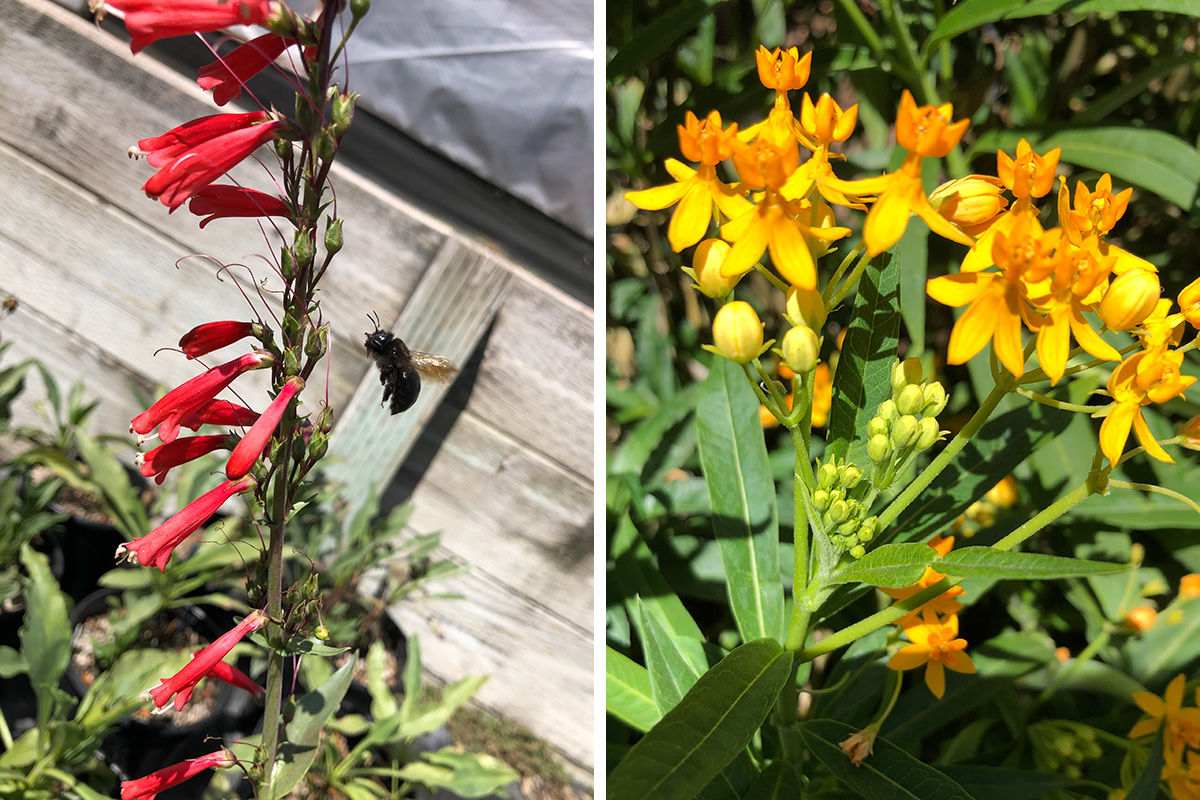
Firecracker penstemon and ‘Silky Gold’ milkweed make for a hot-colored, summery display
Although I usually tend to ensure that my paired plantings have varied heights and textures, I make an exception with this combo. Firecracker penstemon (Penstemon eatonii, Zones 4–9) and ‘Silky Gold’ milkweed (Asclepias curassavica ‘Silky Gold’, Zones 8–11) make a beautiful combination of color and texture. Firecracker penstemon produces tall stalks covered in bright orange-red tubular flowers, while ‘Silky Gold’ milkweed creates clusters of bright yellow flowers. Although both plants have green foliage, the leaves of the penstemon remain mostly clustered at the base of the plant, while the foliage on ‘Silky Gold’ milkweed is differently shaped and contrasts well with the yellow clusters of flowers. When planting them together, keep in mind that firecracker penstemon is quite drought tolerant, whereas the milkweed requires a bit more moisture during extreme heat. If you’re looking for some height in your perennial beds, this colorful combo is perfect.
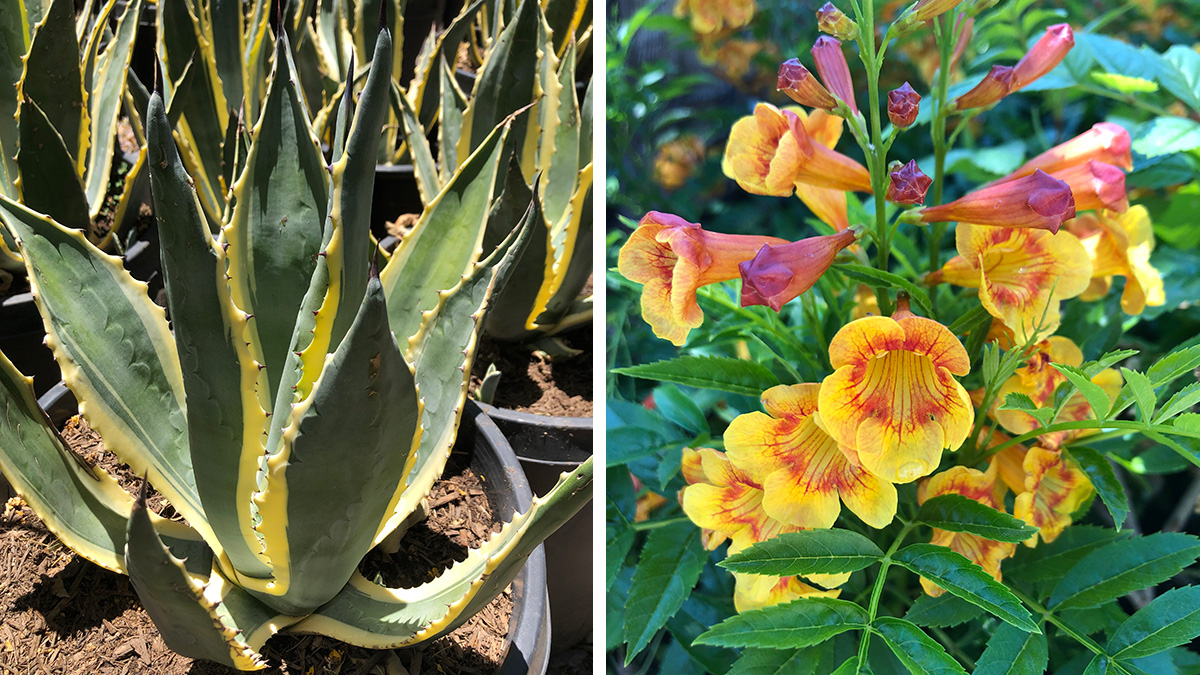
Variegated century plant and Bells of Fire™ tecoma have contrasting textures but complementary heights
My next favorite combination incorporates some serious texture and a juxtaposition of shapes. By pairing Bells of Fire™ tecoma (Tecoma stans ‘TEC6010916’, Zones 8–11) and variegated century plant (Agave americana ‘Variegata’, Zones 8–11), you can create a fantastic blend of opposites. Bells of Fire™ is dripping with gorgeous red-orange, bell-shaped blooms. This shrub is low maintenance, loves full sun, and will continue to bloom from summer to fall. Variegated century plant has showy blue-green and bronze leaves. Planting them alongside one another beautifully blends the two different worlds of shrubs and succulents. At maturity, both plants can reach a height of 6 feet.
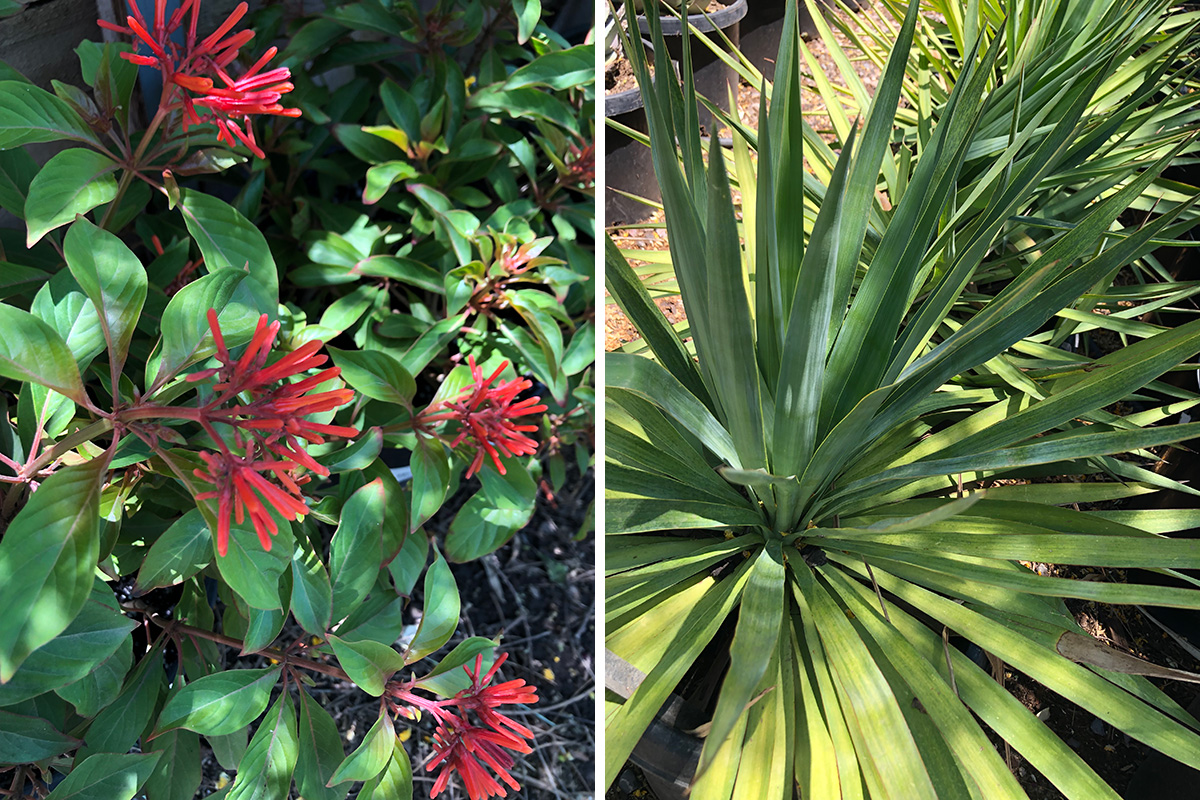
The dense, shrubby habit of Mexican firecracker bush contrasts with the splayed, pendulous foliage of soft-leaf yucca
My final pairing is Mexican firecracker bush (Hamelia patens, Zones 8–11) and soft-leaf yucca (Yucca recurvifolia, Zones 7–11). Again, this is not a typical combo, but I love the long, weeping blue-green leaves of the yucca alongside the bright red flowers and attractive foliage of the Mexican firecracker bush. Both are extremely low maintenance. Soft-leaf yucca can grow to 4 to 5 feet tall, which is a great backdrop to the lower-growing but still substantial Mexican firecracker bush, which can grow to over 3 feet tall. When in bloom, soft-leaf yucca produces a dramatic flower stalk covered in white clusters of flowers in late spring, while Mexican firecracker bush has orange and magenta flowers. But whether in bloom or not, these two plants create a unique addition to any landscape.
Next time you’re plant shopping, think about mixing and matching plant types. Play with different textures, heights, leaf shapes, and blooms. When combining plants, you don’t always need to go with what’s expected. Get creative and have fun exploring some new combinations in your gardens. And for another unbeatable plant combo, check out Seasonal Combo for the Southwest.
—Laurel Startzel is an interior designer and container garden designer. She is a former co-owner of Denver Dirty Girls, a container gardening business, and lives in Tucson, Arizona.
Fine Gardening Recommended Products

ARS Telescoping Long Reach Pruner
Fine Gardening receives a commission for items purchased through links on this site, including Amazon Associates and other affiliate advertising programs.

The Nature of Oaks: The Rich Ecology of Our Most Essential Native Trees
Fine Gardening receives a commission for items purchased through links on this site, including Amazon Associates and other affiliate advertising programs.

Johnny’s Selected Seeds Connecta® Cultivation Kit
Fine Gardening receives a commission for items purchased through links on this site, including Amazon Associates and other affiliate advertising programs.





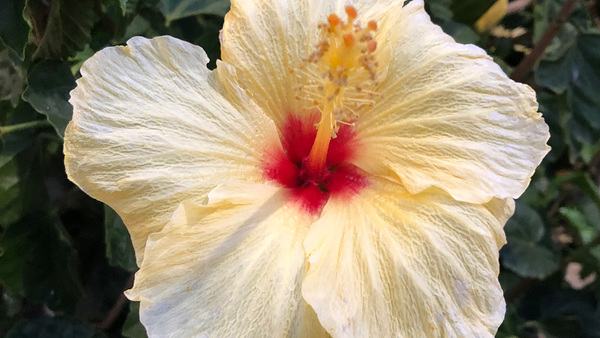













Comments
Log in or create an account to post a comment.
Sign up Log in